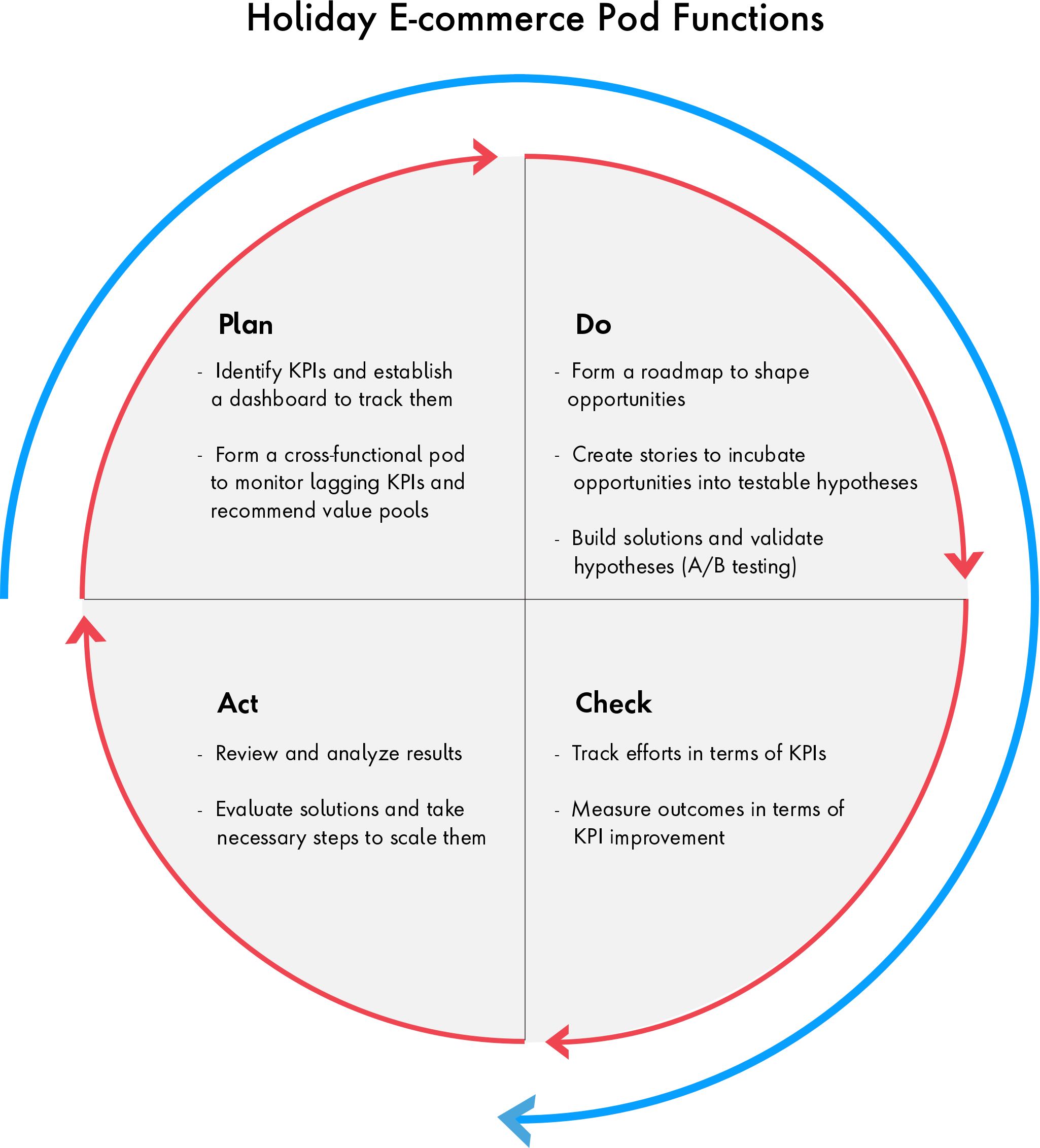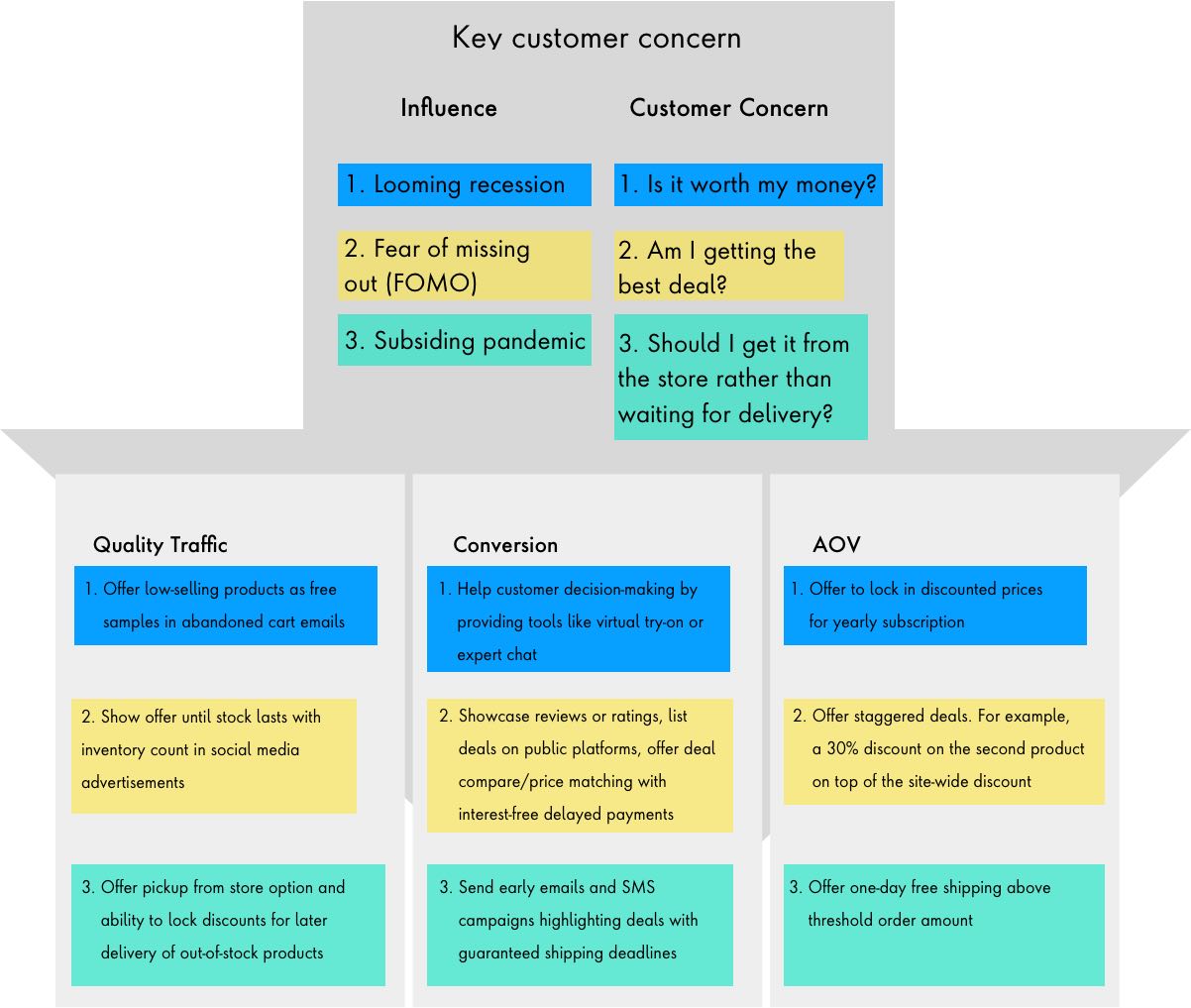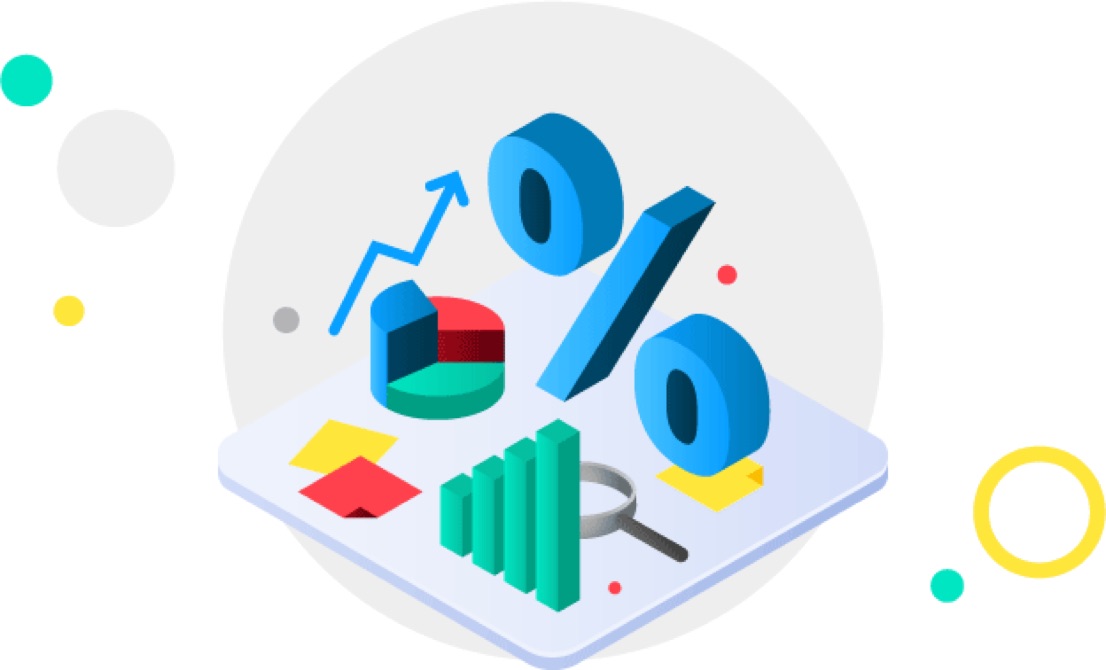What issue can we solve for you?
Type in your prompt above or try one of these suggestions
Suggested Prompt



Insights
How Brands Can Reach Maximum E-commerce Profitability During the 2022 Holiday Shopping Season
How Brands Can Reach Maximum E-commerce Profitability During the 2022 Holiday Shopping Season
In 2021, Black Friday and Cyber Monday generated a cumulative online revenue of $19.6 billion, and, during the holiday season, American consumers alone spent a record-breaking $204.5 billion online.
The e-commerce holiday season frenzy spikes brand revenue on its own, but, combined with a few strategic steps, retailers can reach a much higher potential in Q4 and the rest of the year.
“This holiday season will be joyous: people can spend a full holiday visit with their families more safely than in the past. But the inflation environment is pinching consumers with higher costs, as they largely spent their COVID savings on travel over the summer. Overall, retailers can expect double-digit e-commerce growth and mid-single digit revenue growth — below the rate of increase of inflation.”
Hilding Anderson , head of Retail Strategy North America
Learn key e-commerce profitability strategies for a year-round approach
This article highlights a proven approach to the 2022 holiday e-commerce season with the strategic steps a brand should take before, during and after the holiday period to ensure maximum return on investment (ROI) from e-commerce business.
Preparing for the holiday e-commerce season
The holiday season puts even the top e-commerce sites to the test, and site preparations should start two to three months before sales begin.
One
Benchmark your goals
Establish an automated dashboard highlighting three overarching key performance indicators (KPIs) to track revenue generation.
There are hundreds of e-commerce marketing metrics and KPI measuring tools for brands to choose from, but it’s important to narrow the focus to standard and overarching KPIs that can compare past performance and industry standards.
“If brands don’t know exactly where they are and where they’re heading during the holidays, they’ll never get there,” says Saurabh Bahree, program manager at Publicis Sapient.
Using KPIs will guide informed decisions on the investments into year-round e-commerce setup and maintenance.

Quality traffic — The number of visitors who engaged with the e-commerce site
Conversion — The percentage of visitors who bought from the e-commerce site
Average order value (AOV) — The average dollar amount spent each time a customer places an order on the e-commerce site
Example: If Company A benchmarks against industry standards before the holiday season, this can proactively identify a need to increase quality traffic, conversions and average basket size.

Two
Form a pod
Cross-functional stakeholders should lead
problem-solving, leveraging e-commerce KPIs.
Siloed efforts never scale. There are many moving parts in maintaining an e-commerce site, and forming a cross-functional e-commerce pod is paramount for e-commerce success.
This pod should include stakeholder(s) from the following:
-
• Brand
• Merchandizing
• System integration
• Order management
• Inventory management
• Customer support
• Analytics
• Marketing
• Design
• Product management
What are the pod goals?
1. The pod should take ownership of the KPI dashboard and regularly meet to strategize against lagging KPIs before the holiday season.
2. Next, the pod should shape any identified value pools into a road map and incubate this into a prioritized list of user stories.
3. Finally, the development team should build solution(s) to enable the testing of pod-sourced hypotheses.
4. When the pod achieves the desired results, stakeholders can communicate these solutions, scaling them across the organization. This outcome-oriented approach needs to be followed perpetually.
Reinvent your retail customer experience journey with Publicis Sapient

Three
Enable your site
Set up your e-commerce site for success through performance, load, accessibility and security testing.
Core web vitals
Studies show 79% of shoppers who are dissatisfied with website performance are not likely to return. As page load times increase from one second to three seconds, the probability of bounce increases by 32%.
Action: Leverage recommendations from tools like SpeedCurve to improve Core Web Vitals
Load testing
With 69 million people predicted to shop online on Cyber Monday in 2022 alone, e-commerce sites are bound to hit new load bottlenecks.

Action
Run iterative rounds of load testing and fixing with different variations of anticipated peak traffic to ensure critical user paths, payments, third parties and backend email integrations don’t break.
Learn about Publicis Sapient’s peak e-commerce audit solution
Accessibility
Following web content accessibility guidelines and adhering to perceivable, operable, understandable and robust principles ensures e-commerce is available to individuals of all abilities. To get started, brands should complete a web accessibility evaluation that will scan through the site, highlight the accessibility issues and recommend solutions in line with American Disability Act guidelines.

Action
Security
Anticipating a massive influx of online transactions from new and varied demographics, hackers will take advantage of the opportunity to exploit security vulnerabilities.
In fact, online fraud attempts grew by 208% year over year to a whopping 2 million during Black Friday 2021.

Action
Continuously monitor for malicious activities such as distributed denial-of-service attacks targeting coupon codes and payment gateways through dedicated, certified security teams to ensure customer data privacy, avoid financial loss and safeguard brand reputation.
Four
Create a customer experience strategy
Map out a new customer experience strategy based on changing customer behavior in response to key societal and economic factors.
Certain e-commerce customer experience principles are key to ROI every year. For example, a mobile-first design, minimal calls-to-action and an omnichannel approach are foundational aspects of e-commerce success. But certain customer behaviors fluctuate each year, and brands should adjust accordingly.
“In the industry, we’ve already seen a decline in Q3 in site traffic, and some sites are seeing a drop in basket sizes. Also, the mix — even at discount retailers — is changing, with many reporting a shift towards nondiscretionary items. Many of the pandemic staples in durable household goods — think TVs, electronics and patio furniture — have been dropping as well.”
Hilding Anderson , head of Retail Strategy North America at Publicis Sapient
Key factors that will influence online holiday sales in 2022 are as follows:
1) A looming recession
Economists predict a 96% likelihood of a recession in the next 12 months, and cost-of-living increases have already been affecting consumers in many regions. A recent report showed that job openings in the United States decreased by 1.1 million in August 2022. This economic outlook and potential fear of job loss may force customers to think long term and avoid impulse spending.
Key customer concern:
Is the product worth my money?
-
Customer experience strategic response
Attract traffic
Offer low-selling products as free samples in abandoned cart emails.Improve conversion
Help customer decision-making by providing tools like virtual try-on or expert chat. Empower consumers with interest-free delayed payments.Increase AOV
Offer to lock in discounted prices with a yearly subscription option.
“We’re seeing a shift to more private label brands as consumers look to cut costs in their household budgets. Luxury sectors are also being hit, with some reporting disappointing earnings and lower expectations for the 2022 holiday season.”
Hilding Anderson , head of Retail Strategy North America at Publicis Sapient
2) Fear of missing out (FOMO)
The fear of not getting the best deal rules the mind of customers during holiday sales, especially this year. Seventy-seven percent of customers plan to do thorough research before spending to avoid missing a more attractive deal. Most customers expect the option to return merchandise in case they find a better deal later.
Key customer concern:
Am I getting the best deal? Are others more informed and doing better than me?
-
Customer experience strategic response:
Attract traffic
Show “offers till stocks last” with inventory count in social media advertisements.Improve conversion
Showcase reviews or ratings, list deals on public platforms like Slickdeals, where consumers vote for authentic deals and offer deal compare and price matching to decrease returns.Increase AOV
Offer staggered deals. For example, 30% off on the second article of clothing on top of the site-wide discount.
3) Retreating pandemic fears
More than 50% of consumers are comfortable with brick-and-mortar shopping. With fading memories of lockdowns, frustrations from Shipageddon 2020 and increased delayed deliveries, many customers will flock to physical retail stores.
Key customer concern:
Will going to the physical store be more efficient than delivery?
-
Customer experience strategic response
Attract traffic
Send early email and SMS campaigns highlighting deals with guaranteed shipping deadlines in advance of holiday dates.Improve conversion
Highlight buy-online, pickup-in-store options and the ability to lock discounts for later delivery of out-of-stock products.Increase AOV
Offer one-day free shipping for orders above a certain dollar threshold.

Creating and monitoring a holiday season KPI dashboard
The good news for e-commerce players is that shopping during the holiday season is not limited to Black Friday and Cyber Monday anymore — online shopping promotes consistent purchasing from October until New Year’s Day.
These are some of the top revenue-generating days across the 2022 holiday season for e-commerce in the U.S. outside of Black Friday and Cyber Monday:
November 26 — The Saturday after Black Friday
December 17 — Super Saturday
December 23 — The Friday before Christmas
December 26 — The day after Christmas, aka “Boxing Day”
The e-commerce holiday pod should monitor KPIs on a daily basis, especially on key anticipated shopping days. If necessary, the pod can implement real-time updates in key areas:
- Pricing
- Promotions
- Logistics
- Product
- Marketing
- Storefront

The Holiday KPI Dashboard
Brands can utilize the sample dashboard below to keep a bird’s eye view of KPIs and form a trend line across key holiday shopping days:
Retaining e-commerce customers in 2023
E-commerce brands should use the holiday season as a jumping-off point for the looming recession in the new year. During the most recent economic recession in 2008, roughly 20% of customers switched to lower-priced brands in consumer and retail products.
Although monitoring the KPI dashboard and taking informed actions will remain the core of e-commerce sustainability during a recession, brands should leverage the data gathered from the 2022 holiday season to cater to changing customer behavior in 2023.
Three strategies to cater to changing consumer spending habits during a recession
1. Attract traffic: Leverage first-party customer data, like email IDs, to run segmented marketing campaigns.
2. Improve conversion: Offer discounted gift cards with limited validity to push customers to utilize the amount and convert.
3. Increase AOV: Kickstart loyalty programs targeting affordable subscriptions.
An e-commerce site’s true holiday season potential is realized through preparation, meticulous tracking and detailed analysis and follow-up. An outcome-oriented approach organized around mutual value with continuous feedback cycles can make both the pre- and post-holiday periods complementary to each other, thus allowing for increased ROI.










